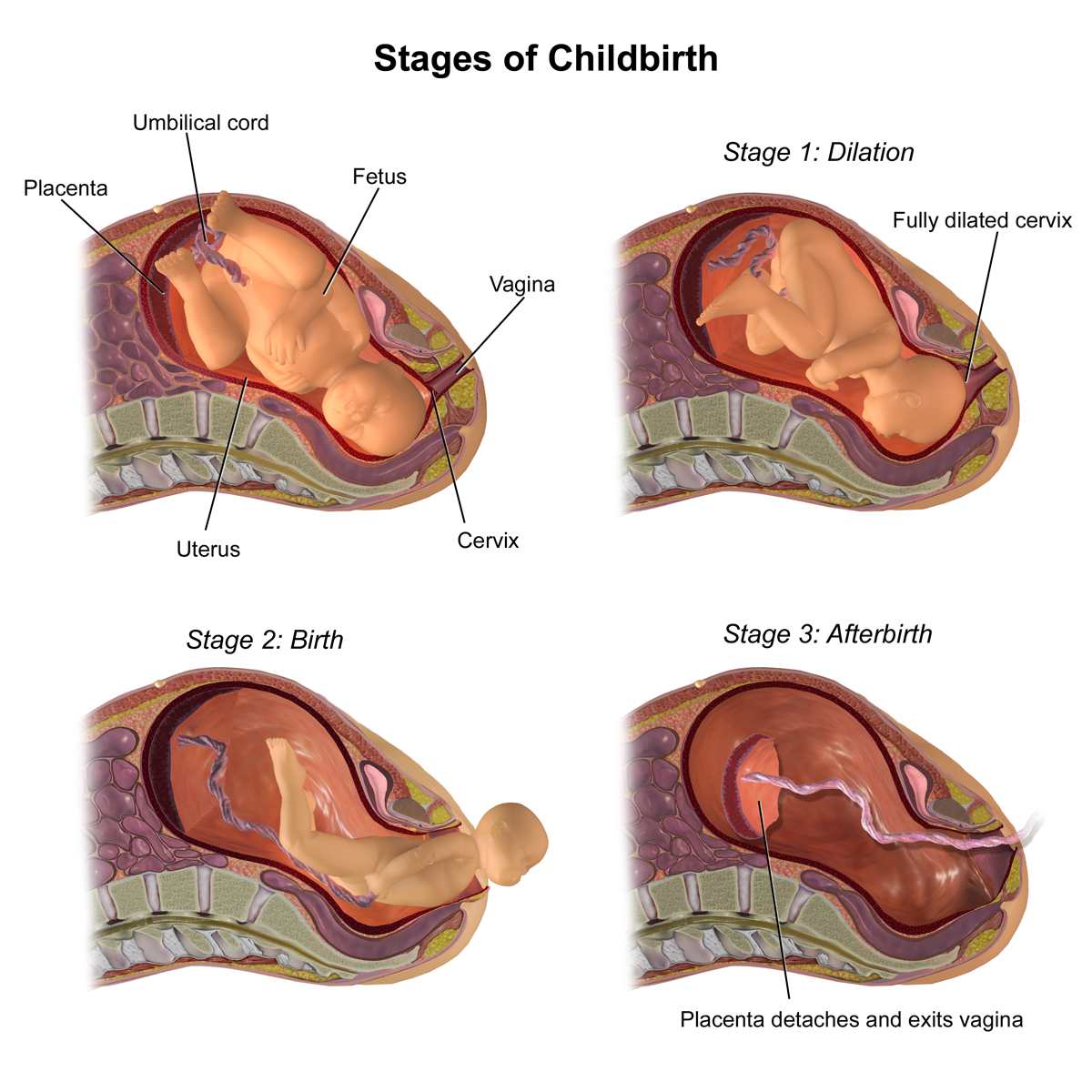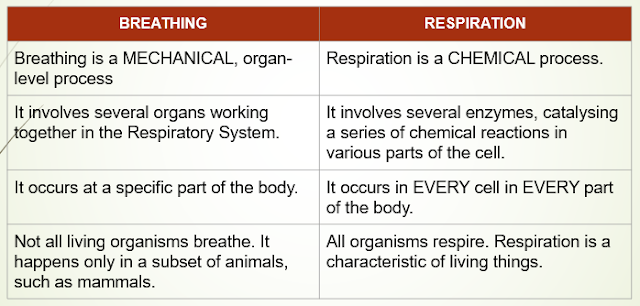HUMAN REPRODUCTION [CSEC HSB & BIOLOGY]
SYLLABUS REFERENCE
CSEC BIOLOGY
- [B9.2] describe the structure & function of the reproductive systems in humans;
- [B9.3] describe the menstrual cycle;
- [B9.4] outline the mechanism for bringing gametes together, their fusion, and the development of the embryo in humans;
CSEC HSB
- [B7.2] describe the structure and function of the reproductive systems in human beings;
- [B7.3] describe the menstrual cycle;
- [B7.4] explain ovulation, fertilisation, implantation, and development of the embryo;
- [B7.5] describe the stages of the birth process;
THE HUMAN REPRODUCTIVE SYSTEM
The Female Reproductive System
Ovary
- Produces and releases eggs (female gametes)
- Secretes oestrogen, which stimulates development of secondary sexual characteristics
- Secretes progesterone, which maintains the soft lining of the uterus during part of the menstrual cycle, and during pregnancy
Oviduct (Fallopian tubes)
- Moves eggs from ovary to uterus using cilia and peristalsis
- Site of fertilisation
Uterus
- Lining of the uterus provides site for implantation and early development of the embryo
- Foetus develops within the uterus
- Muscle in the outer layer contracts during birth, to push baby out of the mother's body
Cervix
- Ring of muscular and glandular tissue at the base of the uterus
- Secretes different forms of mucus during the menstrual cycle
- Retains contents of the uterus during pregnancy
Vagina
- Lining secretes mucus
- Sperm are deposited into the vagina
- Widens to act as birth canal. Baby exits the mother's body through it.
The Male Reproductive System
Functions of the Major Organs
Testis
- Produces sperm (male gametes), from puberty throughout the rest of life.
- Secretes the hormone testosterone. This stimulates sperm production and the development of secondary sexual characteristics
Scrotum
Holds the testes at a temperature slightly lower than body temperature
Sperm Duct (Vas Deferens)
Transfers sperm from the testes to the urethra.
Prostate Gland
Secretes seminal fluid containing sugars as food for the sperm
Penis
Releases semen, which contains large quantities of sperm, into the vagina
THE GAMETES
These are specialised cells, produced via meiosis. Each type of gamete is a haploid cell, meaning that they have half the number of chromosomes as a typical body cell.
They are found only in sexually reproducing organisms, with male and female organisms producing their own particular gamete. Sexual reproduction requires fusion of the male and female gamete to produce a new, unique individual, with its own combination of chromosomes and genetic information.
Ovum (Female Gamete)
Spermatocyte (Male Gamete)
The sperm cell has a streamlined structure, which helps it to swim at high speeds towards the egg.
Head
Contains the nucleus where the genetic information is stored.
Acrosome
Contains several digestive enzymes that are essential to fertilisation. They break down the outer membrane (zona pellucida) of the ovum.
Midpiece
Contains numerous mitochondria, tightly packed. Provides energy via respiration for the cell to swim.
Tail
Propels the sperm cell forward so that it can swim towards the egg, once deposited in the vagina.
THE MENSTRUAL CYCLE
This is a cycle of actions that the female reproductive system goes through, to facilitate fertilisation and to prepare for pregnancy.
It repeats approximately every 28 days.
It is regulated hormonally, and mostly via hormones secreted from the ovaries.
Hormonal Regulation of the Menstrual Cycle
The ovaries, egg cell (ovum) and uterus participate directly in this cycle.
FOLLICULAR PHASE (Days 1 - 13)
- This is how the menstrual cycle begins, with menstruation.
- In the uterus, the uterine lining is shed and leaves the body, with blood, via the vagina.
- In the ovaries, FSH has stimulated one of the primary follicles to start developing. In that follicle, the immature ovum starts to mature. At the same time, the developing follicle produces & releases oestrogen, in gradually increasing quantities.
- With stimulation from oestrogen, the inner surface of the uterus then starts to heal and prepare to build up a new uterine lining.
OVULATORY PHASE (Days 13 - 15)
- By this time, a new uterine lining has fully developed in the uterus. It is ready to accept a newly fertilized zygote.
- By this phase, the follicle is fully developed, and now called the Graafian follicle. It holds the fully mature ovum, ready for release.
- With a surge of hormones, especially FSH and LH, ovulation occurs. The Graafian follicle ejects the ovum out of the ovary and into the nearby oviduct.
- Via the action of cilia lining the oviduct, and peristalsis, the ovum slowly moves towards the uterus
- The remaining contents of the Graafian follicle develops into a corpus luteum, which then starts to produce and releases progesterone in gradually increasing quantities.
LUTEAL PHASE (Days 16 - 28)
- With stimulation from progesterone, the new uterine lining thickens further and maintained, at first.
- However, if fertilization does not occur within about 10 days since ovulation, the corpus luteum degrades and the release of progesterone drops quickly to minimal levels.
- In the absence of sufficient progesterone, the uterine lining can no longer be maintained. It breaks down and begins shedding, starting a new cycle.
What would happen to the hormonal levels if the ovum is fertilised, and the woman is now pregnant?
Progesterone stays elevated - to maintain the menstrual layer.
Oestrogen stays low - to prevent further release of ova.
FROM FERTILISATION TO BIRTH
Fertilisation is the process by which male and female gametes are fused together, initiating the development of a new organism.
In humans, bringing the male and female gametes together starts with sexual intercourse.
Sexual Intercourse
During sexual intercourse, the sperm move out of the epididymis and testes via the sperm duct (vas deferens).
Fluid from the seminal vesicle, prostate gland and Cowper's gland is added to the sperm, in order to produce a mixture called semen.
This mixture is ejaculated into the vagina of the female. Once released, the sperm start swimming towards the oviduct (Fallopian tubes).
Meanwhile...
During the ovulatory phase of the menstrual cycle, one ovum is released into the Fallopian tube. If sperm are in the Fallopian tubes at the same time, they will surround the ovum.
One of the sperm cells will break through the wall of the ovum and transfer its nucleus into the ovum. The male and female nuclei will then fuse and fertilisation occurs. The new diploid cell is now called a zygote.
The zygote formed will begin to develop into an embryo, while travelling down the Fallopian tube, to the uterus.
One of the sperm cells will break through the wall of the ovum and transfer its nucleus into the ovum. The male and female nuclei will then fuse and fertilisation occurs. The new diploid cell is now called a zygote.
The zygote formed will begin to develop into an embryo, while travelling down the Fallopian tube, to the uterus.
Once there, the embryo will implant in the lining of the uterus, where it continues to grow and develop for the rest of the gestation period.
The embryo also develops a placenta, and an amniotic sac around itself.
The Placenta
It is an organ exclusive to mammals. It is also the only organ made up of cells from two different organisms - the foetus & the mother.
It is a relatively large structure, weighing on average about 600 g when fully formed. About 10% of the mother's blood flows through it for each circuit of blood around the body.
Its main function is to allow the exchange of materials between mother and foetus. It takes over from chorionic villi after 12 weeks of pregnancy.
Placental Function - Materials Exchange
This organ allows exchange of materials, while preventing direct contact between foetal and maternal blood. This has distinct advantages:
- The foetus is not exposed to the relatively high blood pressure of maternal circulation.
- It makes separation at birth less difficult.
- Mother and foetus may have different, incompatible blood groups.
- It is easier to block unwanted chemicals and pathogens from getting into the foetal blood.
- Transfer of antibodies is also facilitated.
Placental Function - Endocrine Organ
- From the 3rd month of pregnancy, it takes over completely from the corpus luteum as the main source of oestrogen & progesterone.
- It also secretes chorionic gonadotropin and human placental lactogen (HPL).
- Chorionic gonadotropin maintains activity of the corpus luteum until the placenta can take over.
- HPL stimulates the growth and development of breasts, in preparation for lactation. It works with progesterone & oestrogen.
The Amnion, Amniotic Sac, & Amniotic Fluid
- The amnion is the membrane that encloses the developing embryo and fetus. It secretes amniotic fluid.
- The amniotic fluid fills the space within the amnion - called the amniotic sac - and protects the embryo or fetus against jolts and bumps.
- For the entire time in the womb, the embryo or foetus floats in the amniotic sac.
Stages of Prenatal Development
The Birthing Process
The process of labor and delivery is divided into three stages:
- The first stage of labor begins when you start having contractions. It causes progressive changes in the cervix and ends when the cervix is fully dilated (open).
- The second stage of labor begins when you're full dilated and ends with the birth of your baby. This is sometimes referred to as the "pushing" stage.
- The third stage of labor begins right after the birth of the baby and ends with delivery of the placenta.
















